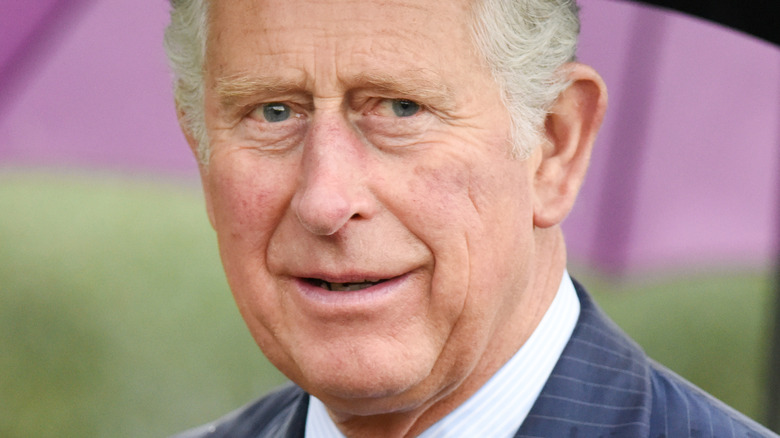At first glance, old photographs of Prince Charles and Princess Anne portray a picture-perfect sibling bond.
Two smiling children, their faces illuminated by the carefree innocence of youth, seem to embody harmony.
However, as they matured, the reality of their relationship became a captivating tale of rivalry, contrasting personalities, and public tensions that unfolded under the watchful eyes of the British populace.
Prince Charles, the heir apparent to the British throne, has often been characterized as gentle, sensitive, and introspective.
His formative years were overshadowed by the immense expectations tied to his royal status, a burden that loomed large over his life.
In stark contrast stood Princess Anne, a formidable presence known for her independence, discipline, and unyielding spirit.
This divergence in their temperaments became glaringly evident during pivotal moments in their lives, particularly surrounding Anne’s wedding to Captain Mark Phillips in 1973.
As Anne prepared for her wedding, she had the freedom to choose any date.
Yet, she opted for November 14, the very day marking Charles’s twenty-fifth birthday.
While this might appear coincidental to some, those familiar with the dynamics of the royal family recognized it as a pointed decision.
Anne’s choice was not lost on anyone; it seemed a deliberate act of defiance, overshadowing what should have been a celebratory milestone for her older brother.
Charles found himself in an uncomfortable position on his birthday, as he was relegated to the background while the nation turned its attention to Anne’s nuptials.
The British press quickly picked up on the unusual timing, questioning whether it was necessary for Anne to schedule her wedding on such a significant day for Charles.
Speculations arose about her intentions—was this a subtle reminder that she, too, could command the spotlight?
The relationship between the siblings had been fraught with tension for years, fueled by their contrasting personalities and the pressures of royal life.
Despite the awkwardness surrounding the wedding date, the event was declared a public holiday, allowing the nation to join in the festivities.
For many, it was a joyous occasion, but for Charles, it served as a painful reminder of his perceived neglect within his own family.
For years, Charles had felt overshadowed by the affection his mother, Queen Elizabeth II, showed towards her second son, Prince Andrew.
Meanwhile, Anne, as the Queen’s only daughter, commanded respect and admiration for her strong character.
Charles, burdened by the responsibilities of the crown, often felt like a second-class member of the royal family.
When Anne’s wedding plans became public, it felt like the final blow to his hopes of celebrating his own achievements.
The contrast between Charles and Anne’s lives was stark.
While Anne married a man without noble blood, Charles’s every move was scrutinized by the public eye.
Mark Phillips, though an accomplished Olympic gold medallist, did not share the royal lineage that Charles carried, further highlighting the differences between them.
Yet, on her wedding day, Anne radiated joy, captivating the press and public alike with her stunning gown—a tribute to tradition that harkened back to the Tudor era.
As Anne exchanged vows with Mark Phillips, over five hundred million viewers tuned in for the first-ever color broadcast of a royal wedding.
Outside the cathedral, crowds cheered for the bride, but when Charles made his appearance, the crowd broke into a spontaneous rendition of “Happy Birthday,” reminding him that his special day had been eclipsed by his sister’s celebration.
Despite the public support, Charles’s feelings of overshadowing were palpable.
After the ceremony, a lavish breakfast at Buckingham Palace featured an impressive five-foot-six wedding cake, alongside a menu of lobster and partridge.
The cake, adorned with fruits and cream, celebrated Anne’s passion for equestrian sports with a figurine of a female jockey on top.
Though the festivities were grand, the dynamics within the family remained complicated, especially when Queen Elizabeth II offered Mark Phillips an earldom, which he declined.
Following the wedding, Anne and Mark embarked on a honeymoon cruise aboard the Royal Yacht Britannia, a cherished royal tradition.
However, their marriage faced challenges, leading to their separation in 1989 and divorce in 1992.
The Queen reflected on the tumultuous year, famously dubbing it her “Annus Horribilis” in her Christmas message to the nation.
Just six months later, Anne remarried in a quiet ceremony, contrasting sharply with the lavishness of her first wedding.
The tensions between Anne and Charles lingered, leaving an indelible mark on their relationship.
Their sibling rivalry, rooted in years of contrasting personalities and public scrutiny, played out for all to see.
Although Anne’s wedding may have overshadowed Charles’s birthday, both siblings eventually forged their own paths, each navigating their unique journeys filled with joys, heartaches, and personal triumphs.
Related Stories

